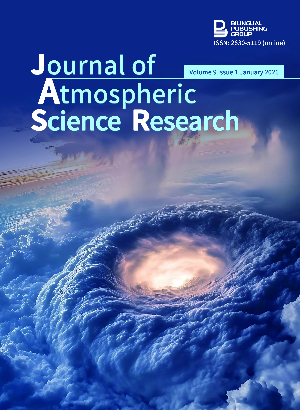-
861
-
404
-
358
-
354
-
338
Journal of Atmospheric Science Research is an international, gold open access journal that publishes original research papers and comprehensive reviews in all subfields of the atmospheric sciences, including but not limited to physical, chemical, biological and human components of the Earth's atmosphere. This journal also takes interests in studies addressing interactions between atmospheric processes and land surface, oceanic processes. Relevant topics incorporating weather extremes, policies, methods, and techniques are also within the scope. Multi- and inter-disciplinary analyses of atmospheric issues are also invited, specifically ones that broaden the understanding of atmospheric research through integration with social, economic, human health or behavioral sciences. The Journal attaches great importance to innovations in research methods and is committed to providing theoretical insights and practical knowledge for researchers in the field of atmospheric sciences. View full aims and scope








